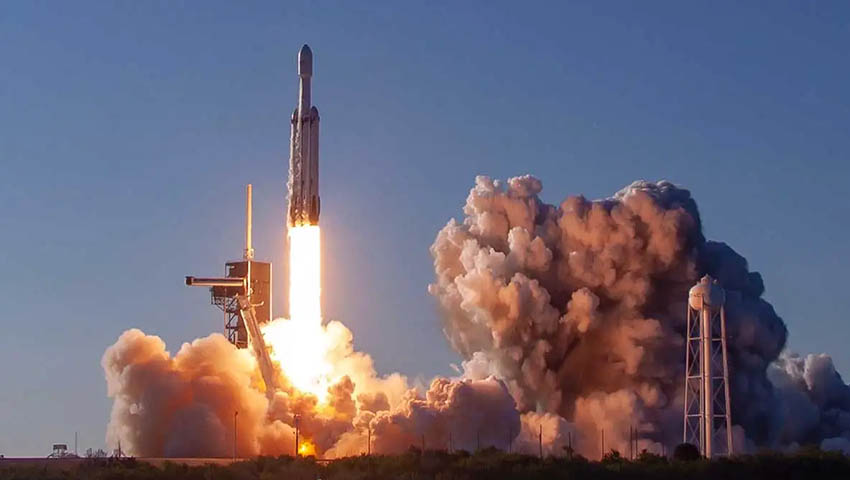
The launch of the SpaceX Falcon Heavy rocket from Cape Canaveral was the first for a paying customer, Arabsat. It was also the first in which all three boosters of the Falcon Heavy were recovered for reuse, substantially reducing the cost of this and future missions and confirming the viability of the business model.
The SpaceX Falcon Heavy is the Saturn V of the space launch industry, able to carry the largest payload of any current launch vehicle. However, it is smaller than the Saturn V, the rocket that put man on the moon.
This was only the second mission of the Falcon Heavy. The first was in February 2018, a trial run that carried one of Musk’s Tesla electric cars as a dummy payload.
Although moon buggies have been launched from Earth, this was the first launch of a consumer vehicle. It remains still attached to the rocket second stage in an elliptical orbit around the sun.
Falcon Heavy is at the polar opposite end of the launch continuum to proposed launches from Australia, which will use small rockets to launch small satellites.
A big rocket was needed for a big payload and the Arabsat-6A weighed in at nearly 6.5 tonnes.
This was built large, with redundant system and fuel capacity to give it a long service life of 20 years or more, against a typical life of around 15 years for other commercial satellites in geostationary orbit.
Arabsat – the Arab Satellite Communications Organisation – is a Saudi Arabia-based telecommunications company and the new satellite will provide communications services over the Middle East.
SpaceX plans to launch the Falcon Heavy boosters from the Arabsat-6A mission on its next Falcon Heavy mission. That’s the US Air Force Space Test Program-2 rideshare mission, which will place 25 small scientific and research satellites into orbit.
Receive the latest developments and updates on Australia’s space industry direct to your inbox. Subscribe today to Space Connect here.












